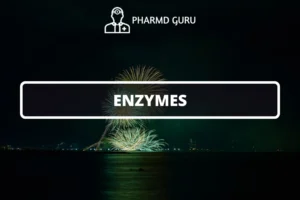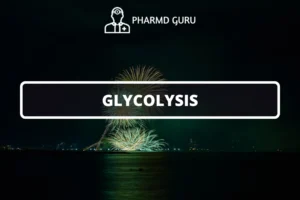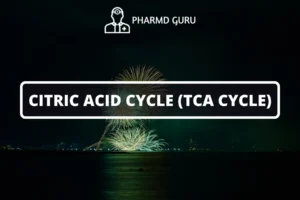Jaundice is a medical condition characterized by the yellowing of the skin, eyes, and mucous membranes. It occurs when there is an excess of bilirubin, a yellow pigment, in the bloodstream. Bilirubin is produced from the breakdown of red blood cells and is normally processed and excreted by the liver. In this article, we will explore the causes, symptoms, diagnosis, and management of jaundice.
SCROLL DOWN TO THE BOTTOM OF THE PAGE FOR ACTUAL NOTES
Table of Contents
- Introduction to Jaundice
- Causes of Jaundice
- 2.1 Hemolytic Jaundice
- 2.2 Hepatocellular Jaundice
- 2.3 Obstructive Jaundice
- Symptoms of Jaundice
- Diagnosis of Jaundice
- Management and Treatment
- Complications and Prognosis
1. Introduction to Jaundice
Jaundice is a condition characterized by the yellow discoloration of the skin, eyes, and mucous membranes. It is caused by the buildup of bilirubin, a yellow pigment produced from the breakdown of red blood cells. Bilirubin is normally processed by the liver and excreted in the bile, but when there is an imbalance in bilirubin production, processing, or excretion, jaundice can occur.
2. Causes of Jaundice
Jaundice can be classified into three main types based on the underlying cause:
2.1 Hemolytic Jaundice
Hemolytic jaundice occurs when there is an increased breakdown of red blood cells, leading to an excess of bilirubin in the bloodstream. Causes of hemolytic jaundice include:
- Hemolytic anemia: Conditions such as sickle cell disease, thalassemia, and autoimmune hemolytic anemia can cause increased red blood cell breakdown.
- Incompatible blood transfusion: Receiving blood that is incompatible with your blood type can lead to a rapid destruction of red blood cells.
- Certain medications or toxins: Some medications or exposure to certain toxins can cause the destruction of red blood cells.
2.2 Hepatocellular Jaundice
Hepatocellular jaundice occurs when there is a dysfunction or damage to the liver cells, impairing their ability to process and excrete bilirubin. Causes of hepatocellular jaundice include:
- Viral hepatitis: Infections with hepatitis viruses, such as hepatitis A, B, or C, can cause inflammation and damage to the liver.
- Alcoholic liver disease: Excessive alcohol consumption can lead to liver damage and dysfunction.
- Liver cirrhosis: Progressive scarring of the liver can impair its function and lead to jaundice.
- Liver cancer: Tumors in the liver can disrupt normal liver function.
2.3 Obstructive Jaundice
Obstructive jaundice occurs when there is a blockage in the bile ducts, preventing the normal flow of bile from the liver to the intestines. Causes of obstructive jaundice include:
- Gallstones: Stones in the gallbladder or bile ducts can obstruct the flow of bile.
- Pancreatic cancer: Tumors in the pancreas can block the bile ducts.
- Bile duct strictures: Narrowing of the bile ducts can cause obstruction.
- Congenital abnormalities: Birth defects or structural abnormalities of the bile ducts can lead to blockage.
3. Symptoms of Jaundice
The main symptom of jaundice is the yellow discoloration of the skin, eyes, and mucous membranes. Other accompanying symptoms may include:
- Dark urine
- Pale stools
- Fatigue
- Abdominal pain or discomfort
- Nausea and vomiting
- Itching (pruritus)
The specific symptoms can vary depending on the underlying cause and the severity of jaundice.
4. Diagnosis of Jaundice
To diagnose jaundice, healthcare professionals may perform various tests, including:
- Bilirubin level: Blood tests can measure the levels of total bilirubin, direct bilirubin, and indirect bilirubin.
- Liver function tests: These tests evaluate liver function and can help identify the underlying cause of jaundice.
- Imaging studies: Ultrasound, CT scan, or MRI may be performed to evaluate the liver, bile ducts, and other abdominal structures.
5. Management and Treatment
The management of jaundice depends on the underlying cause. Treatment approaches may include:
- Treating the underlying condition: Addressing the specific cause of jaundice, such as treating hepatitis or removing gallstones.
- Supportive care: Rest, adequate hydration, and a healthy diet may be recommended to support liver function and overall well-being.
- Medications: In some cases, medications may be prescribed to alleviate symptoms or manage complications associated with jaundice.
6. Complications and Prognosis
The prognosis for jaundice depends on the underlying cause and the promptness of treatment. In some cases, jaundice may resolve with appropriate management. However, certain conditions, such as advanced liver disease or cancer, can have more serious implications. Complications of jaundice can include liver failure, hepatic encephalopathy, or other organ damage.
ACTUAL NOTES




